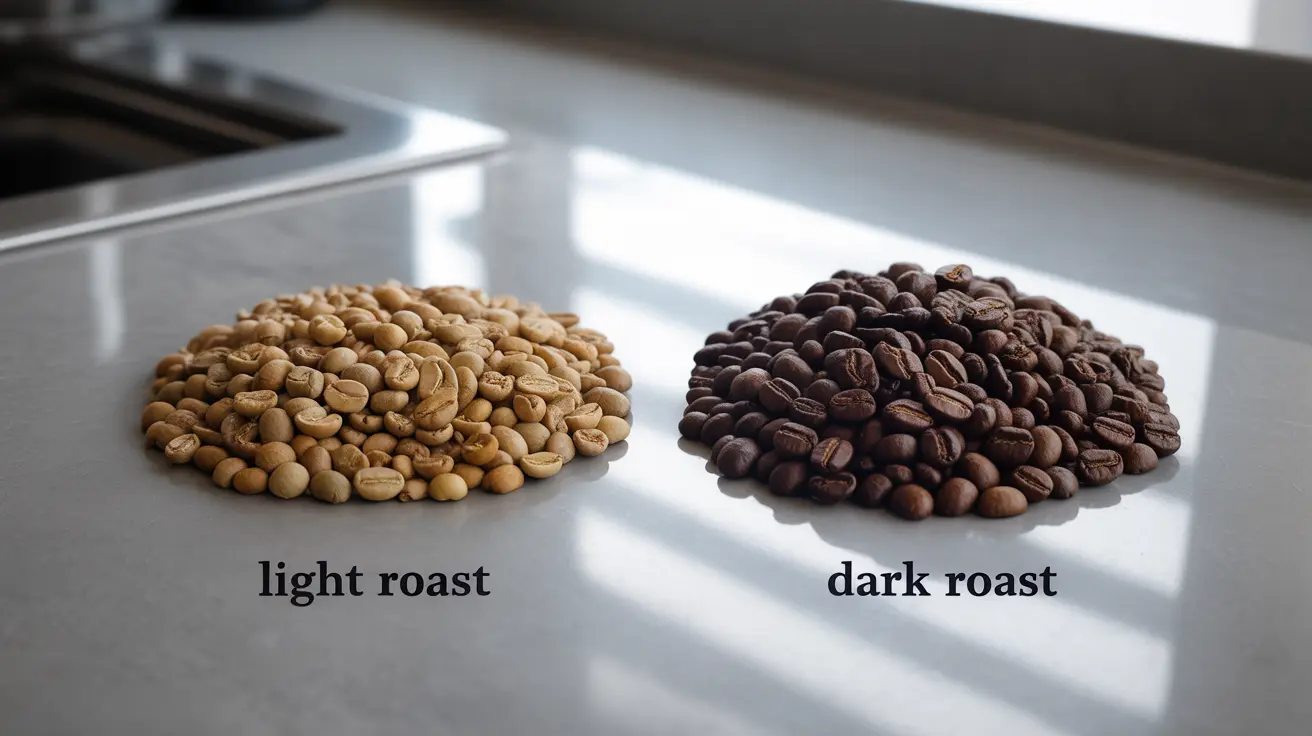For coffee enthusiasts and casual drinkers alike, the debate between light and dark roast coffee extends beyond flavor preferences to questions about caffeine content. Many people believe that one roast contains significantly more caffeine than the other, but the reality is more nuanced than you might think.
Understanding the relationship between coffee roasting and caffeine content can help you make more informed choices about your daily brew. Let's explore the science behind coffee roasting and its impact on caffeine levels.
The Science of Coffee Roasting
Coffee roasting is a complex process that transforms green coffee beans into the aromatic beans we know and love. During roasting, beans undergo significant physical and chemical changes that affect their size, density, and chemical composition.
When coffee beans are roasted, they lose water content and become less dense. This process affects both the bean's mass and volume, which becomes crucial when measuring coffee for brewing.
Physical Changes During Roasting
- Light roast coffee beans are:
- Denser and slightly smaller
- Light brown in color
- Have a matte surface
- Retain more of their original bean characteristics
- Dark roast coffee beans are:
- Less dense and slightly larger
- Dark brown to almost black
- Have an oily surface
- Show more pronounced roasting characteristics
Caffeine Content: Myths vs. Reality
The common belief that light roast coffee contains more caffeine than dark roast (or vice versa) is oversimplified. The truth lies in how we measure our coffee when brewing.
Measuring by Weight
When measuring coffee by weight (such as grams), light and dark roast coffees contain virtually the same amount of caffeine. This is because caffeine is a stable molecule that remains relatively unchanged during the roasting process.
Measuring by Volume
When measuring by volume (such as scoops), light roast coffee may contain slightly more caffeine because the beans are denser. This means more coffee beans fit into each scoop, resulting in more caffeine per serving.
Impact of Roasting on Coffee Properties
While roasting doesn't significantly affect caffeine content, it does influence other important characteristics of coffee:
- Flavor profile
- Acidity levels
- Oil content
- Antioxidant levels
- Aroma compounds
Making Your Coffee Choice
When choosing between light and dark roast coffee, consider these factors rather than caffeine content:
- Flavor preference (light roasts are brighter and more acidic, dark roasts are bolder and more intense)
- Brewing method
- Intended use (espresso vs. drip coffee)
- Personal taste preferences
Frequently Asked Questions
Does light roast coffee have more caffeine than dark roast coffee?
When measured by weight, light and dark roast coffees contain approximately the same amount of caffeine. The difference becomes apparent only when measuring by volume due to changes in bean density during roasting.
How does measuring coffee by weight versus volume affect the caffeine content in light and dark roasts?
When measuring by weight, caffeine content is nearly identical between roasts. However, when measuring by volume, light roast coffee may yield more caffeine per scoop because the denser beans mean more coffee per measure.
Why do dark roast coffee beans appear bigger and less dense than light roast beans?
During the roasting process, coffee beans lose moisture and become less dense while slightly expanding in size. The longer roasting time for dark roasts results in more moisture loss and greater expansion of the beans.
How much does roasting actually affect the caffeine level in coffee beans?
The roasting process has minimal impact on caffeine levels. Caffeine is a stable compound that remains largely unchanged during roasting, with only negligible losses occurring even in the darkest roasts.
Should I choose light or dark roast coffee based on caffeine content or flavor preference?
Since caffeine content is relatively consistent between roasts when measured properly, it's best to choose your coffee based on flavor preference. Light roasts offer brighter, more complex flavors, while dark roasts provide bold, intense tastes with pronounced roasting notes.




